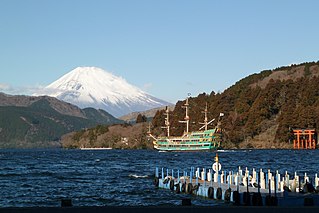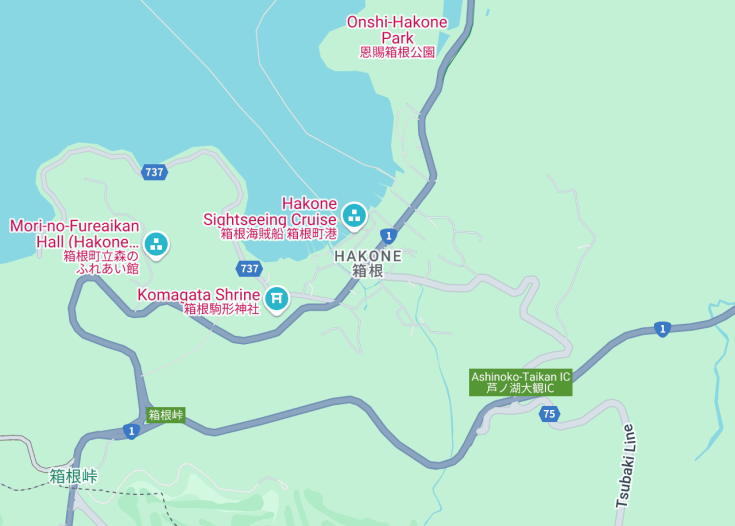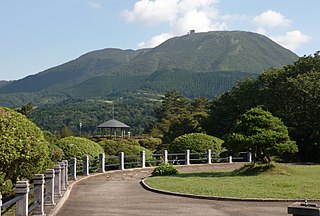Hakone, nestled in the mountainous region of Kanagawa Prefecture, Japan, epitomizes scenic beauty combined with a rich cultural tapestry. Renowned for its hot springs, stunning views of Mount Fuji, and a plethora of art museums, Hakone offers a tranquil retreat from the bustling city life. It serves as a perfect blend of nature, art, and history, making it an ideal destination for travelers seeking a serene yet enriching experience.
Before visiting Hakone, plan to explore the Hakone Open Air Museum; it offers a unique blend of nature and art that is especially magical during the autumn months.
Don’t miss the Hakone Ropeway journey. It provides panoramic views of the surrounding area, including the breathtaking sight of Mount Fuji on clear days.
Top things to do & see in Hakone
Select the following sights and activities to discover best tickets and tours available in Hakone.
Hakone: A Tranquil Retreat in Japan
| Country | Japan |
| Time in Hakone | GMT+9 |
| Language spoken | Japanese |
| Population | 13,492 (source: Japan Statistics Bureau, 2021) |
| Currency | Japanese Yen (¥, JPY) |
| Airports |
|
Hakone, located in the Kanagawa Prefecture of Japan, is renowned for its breathtaking natural scenery and its hot springs (onsen). This small town, nestled in the Fuji-Hakone-Izu National Park, offers stunning views of Mount Fuji and a serene atmosphere perfect for relaxation and exploration. Historically, Hakone is celebrated as part of the old Tokaido road—the vital transport link between Tokyo and Kyoto during the Edo Period.
The allure of Hakone lies in its diverse range of attractions. Besides the natural hot springs, visitors can enjoy the splendid beauty of the Ashinoko Lake, explore the traditional checkpoint at Hakone Sekisho, and admire the art at the Hakone Open Air Museum. The area’s rich and vibrant history alongside its stunning natural landscape has made it a must-visit destination for both history aficionados and nature lovers.
While ideal for day trips, many visitors choose to stay longer, drawn by Hakone’s peaceful environment and cultural sites. The area is also known for its craft industries, including marquetry (Yosegi-Zaiku) and Hakone parquetry, adding to the town’s charm and tourist appeal. Whether it’s enjoying a boat ride across the picturesque lake or traversing the winding mountain paths, Hakone provides a refreshing escape from the hustle and bustle of city life.
Where is Hakone?
Nestled in the mountainous regions of Kanagawa Prefecture, Japan, Hakone offers scenic vistas and cultural richness.
Distances:
| Route | Distance by car | Time by car |
|---|---|---|
| Tokyo to Hakone | 60 miles | 1 hour 30 minutes |
| Yokohama to Hakone | 45 miles | 1 hour 10 minutes |
| Nagoya to Hakone | 150 miles | 3 hours |
What is Hakone famous for?
Hakone is most famous for its hot springs, tranquil scenery, and the iconic views it offers of Mount Fuji. Its rich history as a checkpoint on the historic Tokaido route adds to its cultural significance.
History
Ancient Period: Pre-800 AD
Historic accounts of Hakone begin with its earliest inhabitants, the Ainu people, who are thought to have lived in this region for centuries before it was documented in historical records. The area was sparsely populated, primarily due to its mountainous terrain and active volcanic activity. The hot springs, for which Hakone is now famous, were believed to have spiritual significance for the Ainu.
The Heian Period: 794-1185
During the Heian period, Hakone started to gain recognition as a strategic location. Positioned on the Tokaido route, one of the five routes of the Edo period, it served as a checkpoint controlling traffic between the then-capital Kyoto and Edo (modern-day Tokyo). This checkpoint, established in the 1600s, was crucial in controlling the movements of people and goods, particularly under the Tokugawa shogunate’s strict policies.
The Meiji Restoration and Modernization: 1868-1912
With the Meiji Restoration, Hakone underwent significant changes as Japan opened up to the West and modernized. The development of railways and better road systems during the late 19th century made Hakone accessible to visitors, not just as a strategic point but also as a tourist destination. The area’s natural beauty and hot springs began to attract tourists, including foreign dignitaries and literary figures.
20th Century to Present Day
Throughout the 20th century, Hakone continued to develop its reputation as a premier resort area. Post World War II, the region saw a boom in domestic tourism as Japan’s economy grew and more people could afford leisure travel. Today, Hakone is known worldwide for its scenic vistas, hot springs, and cultural heritage, including the celebrated Hakone Open Air Museum and the historical Hakone Shrine. The region’s history of hosting international visitors has left a cosmopolitan imprint on its character, making it a unique blend of Japanese tradition and global culture.
Visit Hakone
What to see and do in Hakone, Japan
Explore the exquisite landscapes of Hakone, which offers a rich tapestry of attractions and activities. Discover the Hakone Open Air Museum, showcasing impressive sculptures and artworks in an outdoor setting. Relax in one of the many onsens, or natural hot springs, which are said to have healing properties and are a cornerstone of the local culture. Experience the majestic views of Mount Fuji from the Hakone Ropeway, providing breathtaking panoramic vistas. Nature enthusiasts should not miss the Hakone Botanical Garden of Wetlands, home to a diverse range of flora and fauna.
- Hakone Shrine, nestled on the shores of Lake Ashi.
- The historical and scenic Hakone Tozan Railway.
- Various hiking trails offering lush scenery and hidden waterfalls.
Festivals and Events in Hakone
Hakone hosts several cultural events and festivals throughout the year that reflect its rich heritage. The Hakone Ekiden, held annually on January 2nd and 3rd, is a prominent university relay race from Tokyo to Hakone. The summer brings the vibrant Hakone Shrine Festival, featuring traditional boat races and stunning firework displays over Lake Ashi. In autumn, enjoy the Hakone Daimyo Gyoretsu, a historical parade celebrating the feudal lords’ processions of the Edo period.
Best time to visit Hakone
The best time to visit Hakone would be in the spring (April to June) or autumn (September to November). These seasons offer mild weather, making it ideal for exploring the great outdoors and enjoying the scenic beauty in comfort. Spring brings the blooming of cherry blossoms, while autumn showcases a stunning array of fall foliage, each enhancing the natural beauty of Hakone.
Is Hakone worth visiting?
Hakone is undoubtedly worth visiting for anyone seeking a blend of natural beauty, cultural richness, and relaxation. The region’s numerous hot springs, captivating landscapes, and the view of Mount Fuji offer a tranquil escape from the hustle and bustle of city life. Add to it the rich history, accessible outdoor activities and a variety of cultural events, and Hakone presents a compelling destination for tourists worldwide.














